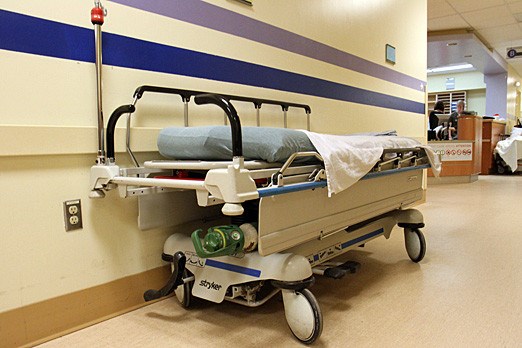THUNDER BAY -- The Local Health Integration Network is injecting $300,000 into the region's hospital to help reduce gridlock.
The Northwest LHIN on Friday released its plan to help solve the gridlock issues that have been plaguing the Thunder Bay Regional Health Sciences Centre.
On Monday, the hospital had a high of 86 alternate level care patients. By the end of the week that number dropped 72. The hallways were also filled with 30 stretchers waiting in the ER for a bed. By Friday only seven stretchers were taking up space in the facility's hallways.
“You can’t have 31 stretchers in the ER and not think you have issues,” said hospital president and CEO, Andrée Robichaud.
In order to alleviate some of the pressure, the Northwest LHIN's $300,000 will provide new spaces for alternate level of care patients in other facilities and for alternate locations within the community.
The plan also includes additional long-term care spaces. It’s expected that this will reduce the demand in the emergency department for patients waiting to be admitted.
Addressing the gridlock is an important task for the hospital to ensure patient safety at the facility.
“I went around with the fire chief and we looked at where our issues were. One of them was to keep our halls clear all the time even though we had them lined up on the sides. We found alternate places so our fire doors were clear.”
The hospital has also assigned an employee to go around every 20 minutes to ensure all passageways are clear.
With gridlock already starting to ease, Robichaud said it’s now a question of community capacity.
“Our volume went up at Christmas by 30 per cent. When your volume goes up, your admission goes up. We started admitting patients but we couldn’t get them into the community.
"I’ve been here for 26 months and we’ve been in gridlock for 26 months. You can’t continue to operate at that level all the time.”
Robichaud called the LHIN and told them that they needed to step up their effort because they were facing a crisis.
Although the plan is in place now, there still needs to be a long-term solution in place to ensure this situation don’t happen again, she said.
Northwest LHIN Laura Kokocinski said the additional funding came from a surplus in their budget. She said the hospital is facing the worst crisis it has ever seen.
“These are the things that need to be done and over the next 30 days to try and take some of the pressure off of the hospital,” she said.
“We’ll be looking at working with four providers but other providers in the city and region so we can look at continuing to keep the pressure off.”
